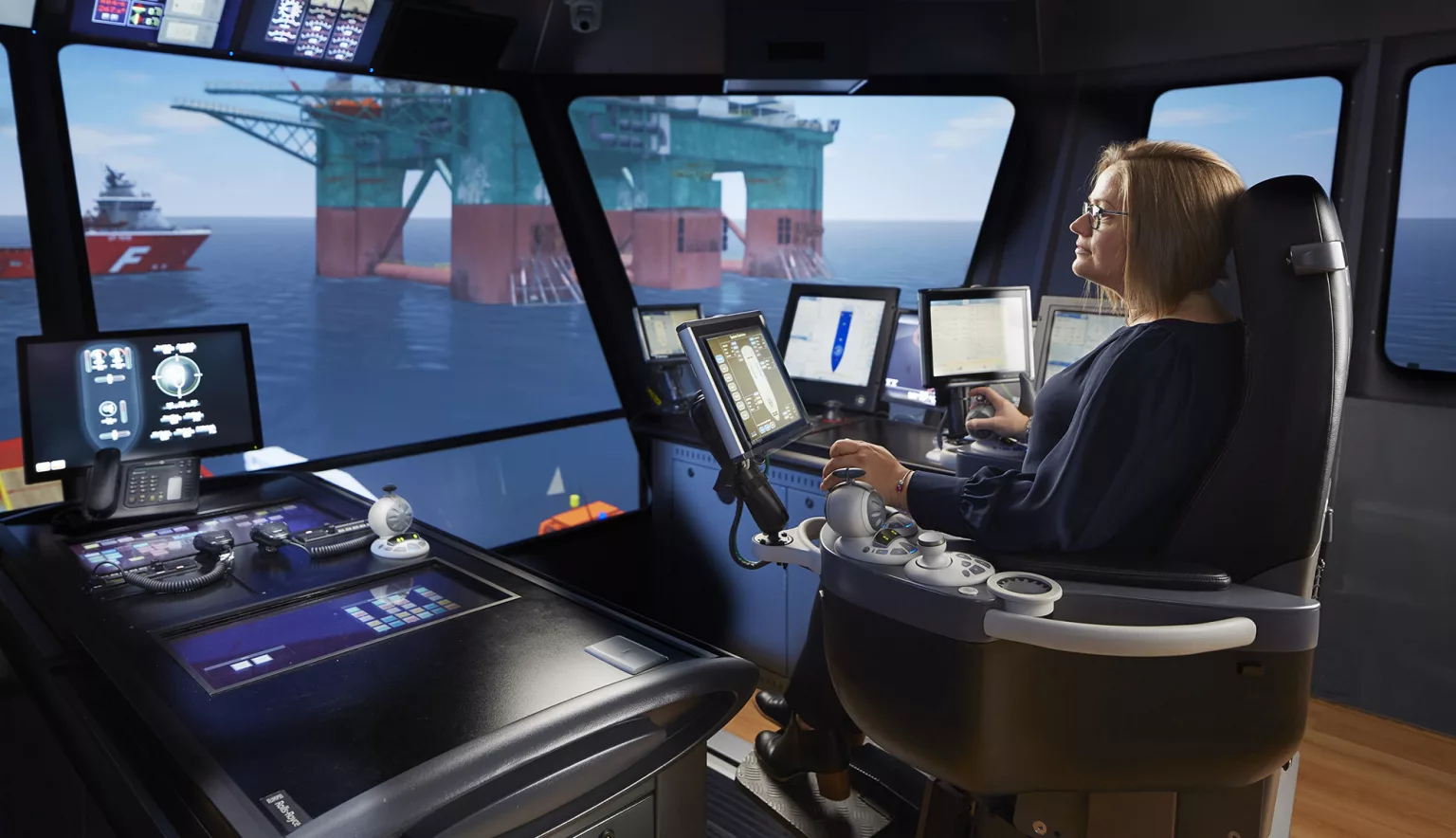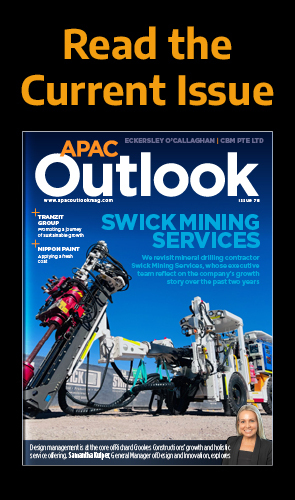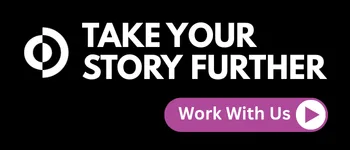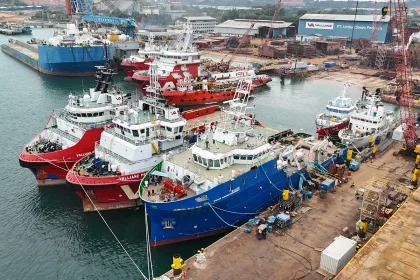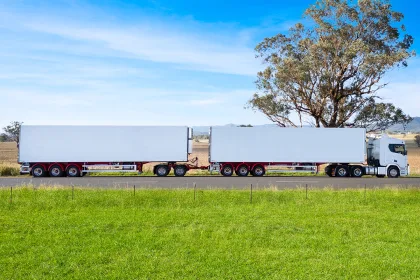Solstad Offshore ASA continues to serve customers new and old, its unwavering approach to vessel quality backed up by unrivalled in-house local support.
WHY QUALITY PAYS
Oceans are the lifeblood of planet earth.
Containing 97 percent of its water and acting as a regulatory climatic conveyor belt, they are also home to 15 percent of all species known to us, and play a critical role in the functioning of the global economy.
Indeed, oceans are often cited as the arteries of commerce. Serving as highways for the shipping industry, they are responsible for the transit of around 90 percent of world trade, trade which is powered by more than 50,000 merchant ships trading internationally and staffed by more than a million seafarers of almost all nationalities.
This all amounts to a sector that is worth trillions of dollars a year. But it is not all plain sailing.
Flattening demand growth, heightened security risks and fuel emissions regulations are all posing obstacles which have led to tightening margins.
However, challenge also presents an opportunity to innovate and differentiate, something which Norwegian shipping company Solstad Offshore is doing in spades.
“Challenging would be the correct word to describe the last five years for everyone connected with this industry,” comments John Annat, the firm’s Commercial Director of AHTS & PSV for Asia Pacific. “I’m sure what we have been through has been described by others as the perfect storm. Having said that, if you don’t enjoy a challenge and a constantly changing environment then you shouldn’t be in shipping.”
Though headquartered in Norway, Solstad is a truly global shipping enterprise with more than 50 years of experience, today employing 4,000 employees and operating more than 130 vessels around the world.
Annat’s priorities lie with Asia Pacific, where the company is winning over the market thanks to its emphasis on quality and reliability.
“We see our role in the region as focussing upon those clients who prioritise high quality, efficient and safe operations,” Annat adds.
“There are strong signs of a move back to quality vessel providers from clients who have tried the lower cost providers but have realised the hidden costs associated with this in terms of non-productive time, fuel efficiencies and safety issues.
“We run an efficient operation and know the cost of operating these vessels and, on that basis, it is evident that rates being contracted by some vessel owners are simply unsustainable if you want to operate a vessel properly.”
RELIABLE, RESPONSIVE, AND SUSTAINABLE
Annat’s comments are backed up by Solstad’s physical presence in the APAC region.
Currently the company works out of three offices (Singapore, Manila and Perth) and has 15 vessels in operation, including platform supply vessels (PSVs), anchor handling tug supply (AHTS) vessels and construction support vessels (CSVs).
Its Singapore and Perth bases cover the full suite of ship management functions, from HSEQ, purchasing and HR to operations, technical and financial. Manila is Solstad’s crewing base, from which the organisation provisions seafarers to support its global fleet.
“From Singapore we cover a large geographical area, supporting vessels in Asia, Middle East, East Africa and Egypt,” adds Annat. “We’re also involved in the delivery of two newbuild PSVs in China during 2020.
“Our Perth office has approximately 30 employees and it’s rare to find a shipowner in Australia with such a comprehensive in-house local support function available to clients. We also have approximately 270 permanent offshore seafarers within Australia – in the high-end vessel space we see this as a key differentiator to our competitors.”
Australia is, according to Annat, a market with higher barriers to entry than the regional average, the Commercial Director explaining how quality almost always comes before commercial considerations.
One trend that is sweeping through the entire regional (and global) industry, however, is sustainability.
Annat cites exciting developments in Taiwan and Australia which are bringing new vessel requirements to the market, especially relating to the use of renewable energy.
“We see a lot of discussion in the industry around sustainability,” he says. “There are many buzzwords thrown around and arbitrary targets set, but Solstad has been actively implementing measures that can be properly quantified.”
The company’s Green Operations programme, for example, was first introduced back in 2009.
This is designed to help crews limit vessel emissions while in operation, Solstad investing in cloud-based fuel monitoring software which enables comparison between vessel classes, operating modes, crew rotations and other factors, as well as predictions for future fuel consumption.
Annat points to several other green initiatives and breakthroughs, notably the introduction of seven hybrid vessels which have led to proven efficiency gains of between 11 and 15 percent. Dual fuels have also been successful, helping charterers to substantially reduce their footprint in terms of NOx (up to 90 percent), sulphur (100 percent) and CO2 (25 percent).
“Our first CDP (carbon disclosure project) report was produced in 2011, while our first carbon footprint audit was held in 2009,” Annat says.
“We have a continuous focus on our emissions, and that is why we have chosen United Nations Sustainable Development Goal number 13 (Climate Action) to be our primary focus point, together with SDG 8 (Good Jobs and Economic Growth) and SDG 14 (Life Below Water).
“Going forward towards 2030 and 2050, we have started working on our decarbonisation trajectory which will gradually reduce our carbon emissions and eventually make us climate neutral.”
2013 was also a landmark year, the company formally beginning reporting of corporate social responsibility activities, addressing human, labour, environmental, climate, corruption and bribery issues.
NEW ENDEAVOURS
This responsible, reliable approach to business has resulted in Solstad securing a number of recent contracts with both existing and new clients.
In Australia, at the backend of 2019, the company secured contracts for six and two vessels respectively from Woodside and Inpex, both firms drilling on the North West Shelf and extending what are already long-term partnerships with Solstad.
Across the Tasman Sea, Austrian oil and gas multinational OMV has become a new client.
“OMV is particularly exciting for us as it’s the first long term support vessel that we’ve had operating in New Zealand,” says Annat.
“This was a target project for us for several months and involved reactivation of a vessel in Singapore together with a class docking prior to contract commencement. Having the technical and operational support functions in Singapore helps us properly prepare the vessels for service and co-ordination with local vendors and suppliers.
“We often say in the commercial department we have the fun part of the job, and the true test is in how we then deliver that service to the client.”
Annat refers to technical and operational support functions in Singapore as critical to its ability to serve clients, and in Australia, a state-of-the-art vessel simulator facility is ensuring its employees are provided with the most up-to-date, lifelike training.
“The Offshore Simulation Centre is a fantastic facility,” Annat continues. “It was the first offshore specific simulation centre in Australia and the largest integrated centre of its kind in the world. The Centre is also the only dynamic positioning (DP) facility in Australia, which is accredited by The Nautical Institute for the DP Induction, DP Simulator and DP Revalidation training courses.”
Fitted with multiple simulators to enable a large team to carry out an operation at the same time, they feature soft panels on the consoles and displays to replicate different vessel and equipment types, meaning almost any scenario can be covered.
Facilities such as the Offshore Simulation Centre will only serve to futureproof Solstad and its workforce as new vessel technology enters the market and new techniques are required to maximise efficiency and service.
Looking ahead, Annat expects the Australia and New Zealand markets to remain solid through 2020, the Commercial Director targeting growth in Asia and the Middle East, citing the inaugural assignment of Solstad’s first dual fuel vessel in the region, Normand Leader, as an exciting moment to watch out for.
Annat concludes: “Our priority is to continue to perform in line with our core values. Safe operations, reliability, competency and responsibility form the basis of our business. If we respect these values while continuing to innovate then things tend to fall into place.”




